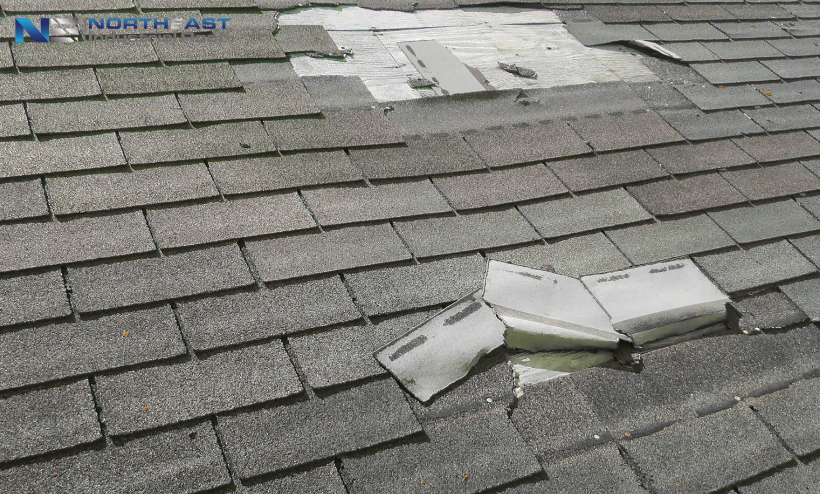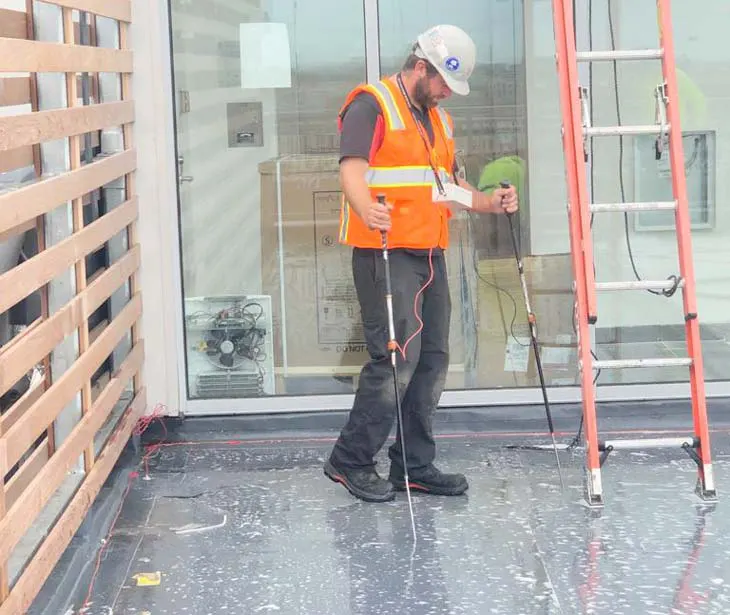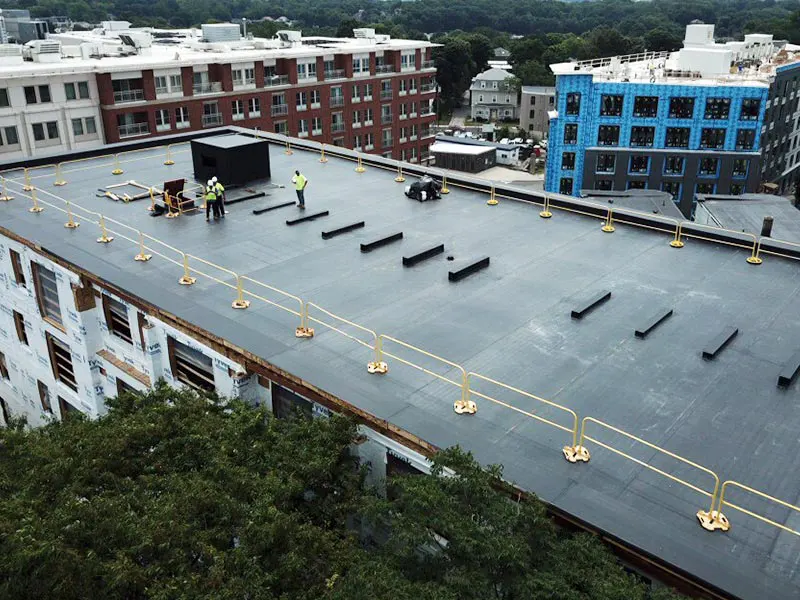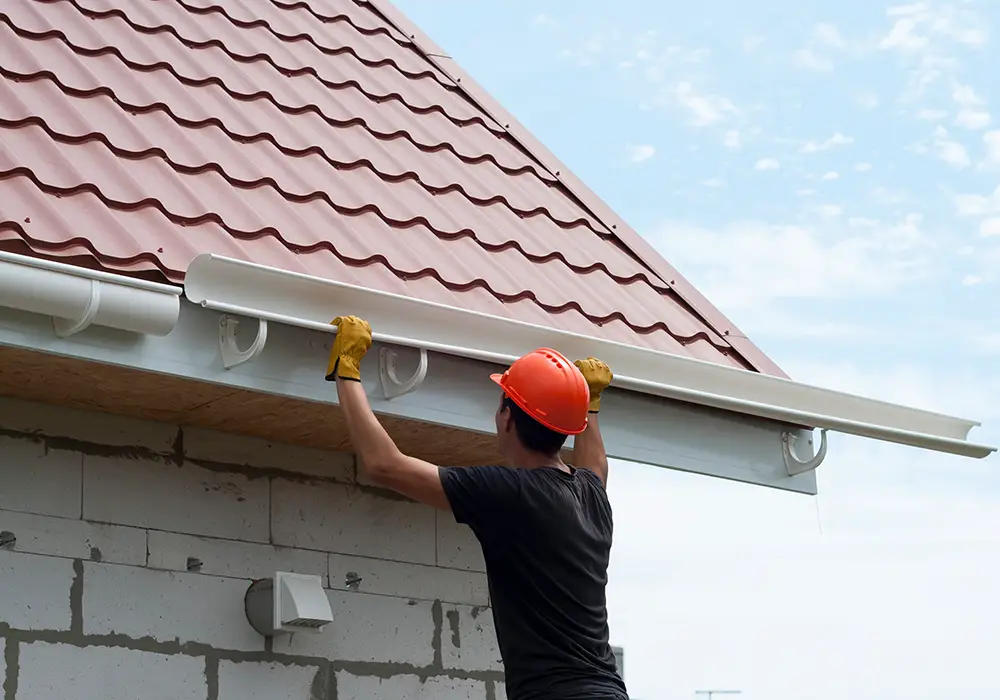Difference Between Commercial & Residential Roofing
February 3rd, 2021
Commercial roofers and residential roofers often have equally important but very different jobs. You may be wondering why – isn’t a roof just a roof, regardless of the building it’s attached to?
Not really. Commercial and residential roofs differ vastly in terms of permitting and other regulations, materials, design, care and maintenance, installation/repair methods and overall costs related to materials & labor.
Here, we’ll address the major differentials that separate commercial and residential roofing
Size & Design
Commercial roofing is not only a larger-scale project than residential roofing, it’s also much more complicated and requires specialized knowledge related to the design of the roof. Since commercial roofs are typically much larger than residential roofs, weight must be a factor in determining what type of roofing material to use, how to distribute weight properly while working on the roof and how to work around many penetrations such as skylights, HVAC units, roof vents, and other protrusions necessary for the overall function of the building and its roof.
Commercial roofs tend to be either flat or very low-slope, which means that during the winter, snow will not simply slide off of the roof; rather, a large, flat commercial roof often requires professional roof snow removal. Snow removal is critical but is not something that can be done by non-professionals without risking damage or injury. For one thing, snow is very heavy, which can put an incredible strain on the structure of the building when buildup occurs. Many a commercial roof has collapsed due to the added weight of snow buildup.
When snow melts, it often has nowhere to go, so it pools in lower-lying areas of the roof. Without proper drainage, the weight of the water can begin to cause leaks in the membrane, risking the structural integrity of the building and the health of the individuals who work inside. Keeping the roof drains clear and in good working order is of utmost importance, as is the timely removal of built-up snow to prevent ice dams from forming.
Our professionally-trained Boston-area commercial roofers adhere to the industry’s best practices and all local regulations related to safely and effectively navigating a commercial roof so that even when it is covered in a thick blanket of snow, roof penetrations can be safely avoided and the roof remains undamaged through the winter.
Similarly, in the summer, thunderstorms can bring copious amounts of water and wind. Commercial roofs must be designed, built and cared for properly to withstand these weather conditions.
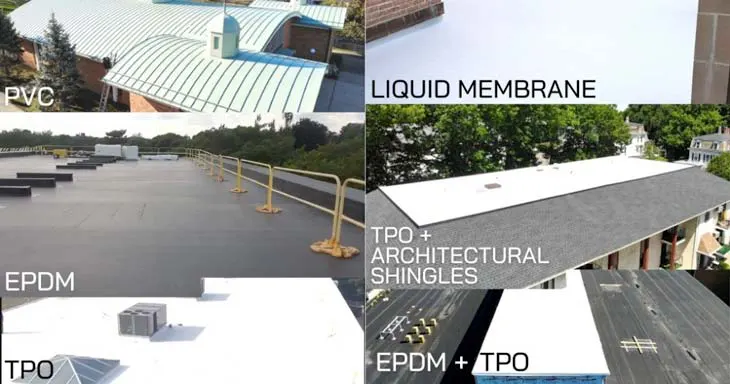
Materials
The materials used on residential and commercial roofs typically vary based on the design of the roof as well as the cost, regulatory parameters and local weather patterns. A commercial roofer is specifically trained to accurately determine which materials will last longest, be of suitable weight and fit within the client’s budget.
Due to the size, number of penetrations and lack of pitch of most commercial roofs, typical residential roofing materials simply are not suited to protect a large flat or low-slope roof. While aesthetics often play a large role in choosing a roofing material for residences, commercial roofing is typically home to HVAC units and other unsightly penetrations. Therefore, aesthetics are not considered as heavily as factors such as utility and energy-efficiency.
Most commercial roofs are built using the most practical material for the needs of the building. Those needs typically call for the reflectivity and/or strength of lightweight membranes such as PVC, TPO, or EPDM. Other practical and common types of commercial roofing systems include metal, green roofs and roofs designed to support solar energy systems.
Maintenance
While a homeowner is able to climb the ladder and clear out the gutters once or twice per year, commercial building owners lack that option due to the sheer size and complexity of a commercial roof. In fact, it is recommended that commercial roofs receive a thorough inspection by a professional roof inspector at least once, but preferably twice, per year and after any heavy storms.
A small fracture in the membrane may remain unnoticeable to the untrained eye during the summer, but when winter comes, the thermal shock and the melting and refreezing of snow and ice will turn that microscopic crack into a break that more closely resembles the Grand Canyon when spring finally arrives. Similarly, lack of proper drainage during any season of the year can cause thousands of dollars or more worth of damage to a commercial roof and the building itself.
Professional commercial roofers can perform extensive leak testing, moisture detection and other types of specialized testing to ensure that the roof is structurally sound and up to the task of protecting the building and everyone and everything inside it.
Installation & Cost
The installation process differs vastly between residential and commercial roofing, as does the total cost of the roof. This is due to the difference in size, scope, materials and labor involved in the actual process of installing a roof.
Commercial roofing requires knowledge and skills that are beyond those required for residential roofing. This is not meant to diminish residential roofers’ skills, as they also must be experienced, educated and aware of all possibilities presented in any given roofing situation, but to express the added risks taken by commercial roofers.
Commercial roofers are often required to work in close proximity to industrial pipes, smokestacks, HVAC equipment, skylights and more, and many of the roofs are very high from the ground. These risks must be calculated and mitigated with safety equipment such as safety rails, harness systems, and sometimes, breathing apparatus systems; these measures must be taken without compromising the quality and speed of the work performed.
Installation and repair projects, while on a smaller scale and shorter timeline for residential projects, can take weeks to complete on a residential building, depending on its size, materials and installation method.
Consider the discovery and remediation of a leak on a commercial roof versus one on a residential roof. Inspecting and assessing the roof, performing the necessary testing and removing and reapplying the roof’s layers happen at a much grander scale when you’re dealing with a commercial roof that is 10,000+ square feet compared to a typical residential roof suffering from an isolated leak.
These factors – the increased risk, advanced skill set, sheer amount and type of materials and labor – contribute greatly to the increased cost of a commercial roof repair and/or replacement in comparison to a residential roofing job.
At Northeast Industrial Roof, our roofers are skilled and knowledgeable in the area of residential roofing but have gone the extra mile to become certified, experienced commercial roofing experts. Our focus is on providing the highest quality commercial roofing services to Boston-area businesses through our dedication to continuous training and education, partnerships with top brands and industry-leading warranties.
Whether we’re working on a roof or interacting with our customers, we are committed to showing our dedication to what we do. For these reasons and more, our customers are as confident in our abilities and excited about our work as we are.
Have an after-hours roofing emergency that needs to be addressed ASAP? Call our 24/7 emergency service line at (781) 859-7523.

